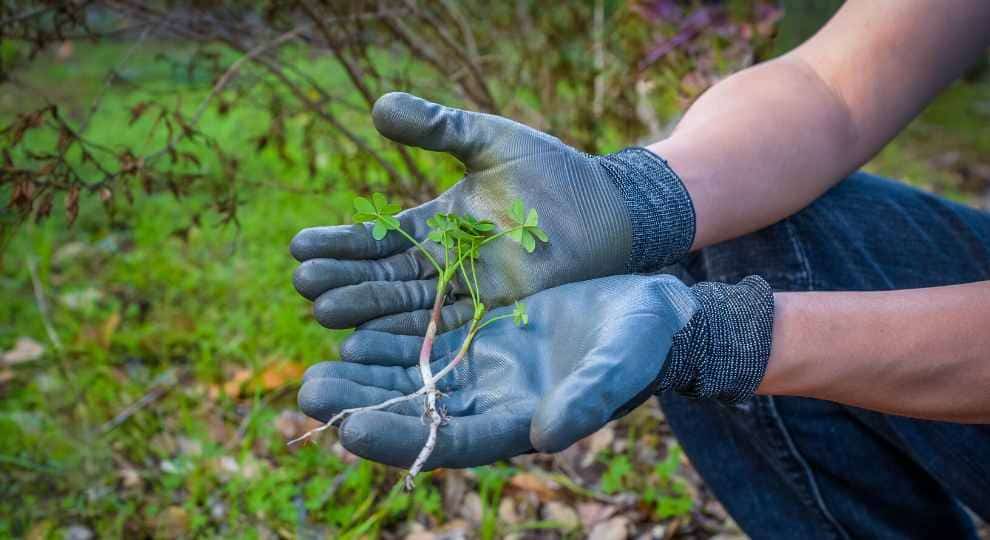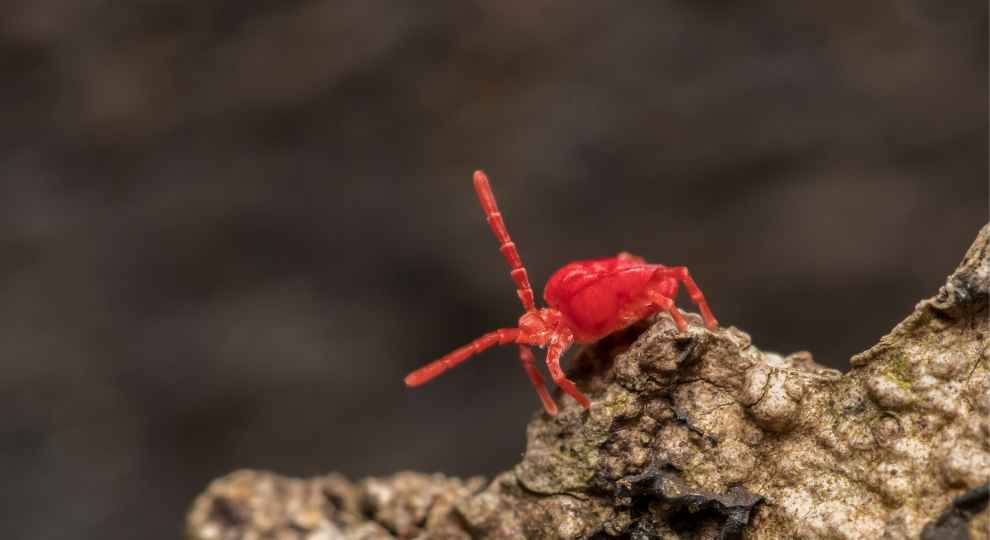No matter how you aim to raise the best garden beds, you still need to manage the pesky weeds.
While you wish to enjoy the perennial thrive of your garden, here comes the reality that garden weeds are the ever-present enemy out to ruin your hard work. DIY weed killer solutions are a way to fight back.
In my case, I do not want to rely on expensive store-bought solutions to eliminate those weeds. These solutions can contain harsh and toxic chemicals that may endanger my kids and my dear pets.
Also, there are small creatures and microorganisms helpful in the growth and yield of my garden and lawn plants that may die and go. I want to use a safe and all-natural way of getting rid of those weeds.
Types of Weeds
Before we go too in-depth talks about alternative and eco-friendly ways of dealing with these weeds, let us know what these weeds are.
We need to know what kinds of grass we are dealing with to understand what appropriate method we will use to eliminate and manage their cycle.
There are weeds that produce an enormous quantities of seeds if you quickly pull them with your hands. Some weeds sprout and repopulate from the pieces of roots left from pulling them out of bed. Likewise, there are wily weeds (i.e., Dandelion) that regenerate through its numerous seeds and the roots that were left behind. Therefore, your efforts in trying to elimate them will encourage their growth.
Annual Weeds
These annual weeds (e.g., Galinsoga and Lambs Quarter) have only one year to live. However, these weeds are tricky because they are capable of covering the whole ground with their seeds.
When pulling these weeds, they get the high chances of regenerating more because the tiny seeds can quickly spread.
If you want to pull them out with your hand in rubber gloves, pull them by digging at the side so that seeds will not easily spread by shaking its stem or leaves. Otherwise, you cut their stems from below to prevent them from growing.
Taproot Weeds
Perennials like the Dandelions can regrow from any part of their roots that are left in the soil.
When you want to remove them, you need to get rid of all their long and strong roots out of the soil. You may use a flat garden space and plunge straight down right next to the root to help you easily pry out.
Rhizomatic Weeds
I think this is the hardest to control weeds. They have horizontal stems called rhizomes that easily grow when they are cut-off. Some of the common rhizomatic weeds are Nettle, Witchgrass, and Quack grass. Garden experts loosen first the soil around these weeds to easily pull them out.
Tough Garden Weeds In Your Flower Beds
These are the kind of weeds that breed in hard and compacted soil. Some common weeds are Chickweed, Plantain, and Dock. If you wish to pull them out, you need to prepare your muscle and strength.
Garden enthusiasts remove them by loosening the soil with the use of the oscillating stirrup hoe, and then you can pull the weeds easier. Of course, you need to allot more time and effort.
Monster Weeds
They are described as aggressive weeds. Some of the examples are Japanese Knotweed and Bindweed. They grow in deep and vigorous roots. But they can be eliminated by starving them of light.
Amazing All-Natural Weed Killer
Honestly, all I know about weed control is either the use of herbicides and other weed-killing chemicals and weeding tools with my hand gloves.
Amazingly, I discover that there is a natural and all-natural weed killer that is available in my very own kitchen.
I never thought of the idea that the potential best grass killer can only be found in my kitchen. Most of them are typical ingredients when I am cooking the savory recipes.
In this article, I will be sharing to you the top choices that you can grab in your kitchen to get rid of those weeds in your garden and lawn.
Best DIY Weed Killer
Borax | Easiest and Very Cost-Effective
Honestly, I thought Borax is only suitable for cleaning clothes. It is excellent to know that Borax is an excellent DIY weed killer for your lawn and yard. However, you need to be careful that it will not touch your flowers or vegetable because it can disrupt their growth.
Borax contains sodium borate that dissolves easily in water. It is considered as low toxic that is why you need to keep Borax out the reach of children or pets since it can still cause injuries.
How To Use Borax As A DIY Weed Killer and Best Grass Killer?
Take 10 ounces of Borax and dissolve in 4 ounces of warm water. Once dissolved, add two and a half gallons of water and mix the solution thoroughly. This mixture is useful to treat at least 1,000 square feet of area, but it depends on how heavy is the weed infestation. It will be better to use a garden sprayer for even application.
It will be useful if you use Borax during spring because it is the season that weeds are growing actively.
But, you need to be cautious not to let the mist touch the desirable plants in your garden because it can destroy them. When using Borax, you may need to wear some protective gear as it can irritate skin and eyes.
Individual plants can be sensitive to Borax like the Ground Ivy (Glechoma hederacea).
You can consider applying the solution during the mid-day when the wind is not blowing to limit the possibility of carrying the spray mists to the sensitive plants.
Otherwise, you can consider pulling weeds that are close to sensitive plants or use other means of eliminating them.
Lemons Plus Vinegar
Who would have thought that the refreshing bright-colored Lemons that I used to zest in my favorite salad and sauce can quickly kill the weeds of my vegetable garden? Well, I know that lemons can be a home-made solution to naturally whiten the laundry or moisten your dry hands and feet but not on killing weeds.
How do we apply this DIY grass killer?
Squeeze four ounces of lemon juice and mix it with a quart of vinegar. Place it in a sprayer and simply wet the area where the weeds are growing. For best results, use vinegar that contains at least 10 percent of acetic acid.
Vinegar
I’ll say this DIY weed killer technique is the cheapest and environmentally safe. Even if you use in high concentration, it is still non-toxic.
The experts from Agricultural Research Services conducted a series of research to prove that vinegar can be the best and safest way to kill the pesky weeds.
You easily place five to ten percent concentration of vinegar and spray directly to the weeds.
You do this every day and see the results in one to two weeks. For older and bigger weeds, you will likely need high concentrations (85-100%) to kill them.
There are studies where they use vinegar to eliminate weeds in corn farms where the scientists show evidence of killing 80-100% of the weeds without harming the corns. They also claim that the use of vinegar can only cost $65 per acre.
Pro Tip: Add some DAWN dish detergent to act as a sticking agent.
Newspaper Mulching
After you read your daily newspaper, where did it go? Please do not throw them!
If you want to combat the pesky weeds in your laws or backyard, the newspapers can be best weed killer for flower beds and make your garden look fresh and attractive again.
The National Garden Association agrees that the mulching method using newspapers can make the weeds disappear instantly. When you constantly mulch your garden with a newspaper, surely it will slowly stop the generation of weeds.
The idea is you suffocate the weeds with the use of newspapers. How do you do that?
- Water the bed deeply then lay the newspapers directly atop the weeds a din-between the plants.
- Once all the ground with weeds is covered, spray the newspapers with water. Water can permeate the paper, and the soil below will absorb the moisture enough for the soil to maintain its healthy structure for the plants. Spraying the newspaper with water will also the paper not to budge and not easily be blown by a strong wind.
- Top the newspaper with mulch. You can use shredded leaves and woods.
The great benefits you will enjoy with newspaper and mulching:
Weeds cannot sprout and grow because of the thick layering that covers the ground at least for one season. There cases that beds became weed-free for two years in a row. It saves you time and effort while increasing yield.
The paper and the shredded mulch will decompose and becomes the abundant food for the soil organisms. If your yard is cursed with crappy and acidic soil, the organic material can help improve the soil nutrients that will benefit the plants.
The plant friendly worms and other soil-enhancing microorganisms will increase and improves the soil aeration. It helps to improve the balance of soil moisture, nutrition, and diversity of organisms.
Moreover, you may also use cardboard as an alternative to the newspaper. Do not worry about the chemicals used in the press like the ink used in printing because printed publications today are using soy-based ink materials. These are proven to be non-toxic. Newspapers are used for packaging vegetables and fruits to preserve its freshness.
Vodka
Okay, this is NOT the most cost-effective you can use and it’s almost a crime.
Now, before you pour yourself with some Vodka, think of using this in getting rid of those pesky weeds. Vodka can be an effective all natural DIY weed killer of broad-leaf weeds like Dandelions, Mullein, and Plantain Weeds.
How do we do use Vodka to be a natural weed killer?
First, identify the kind of weed that you want to eliminate in your yard. Broad-leaf weeds are common in most of our yards. Some of the common plants with broad leaves are Dandelions, Chick Weeds, Wild Onion, Mullein, and Plantain Weed.
Second, get a spray bottle.
Remember to determine the size of the yard you need to spray because that will let you know how much Vodka you need to spray. Mostly, a pint of Vodka can be enough to cover a typical size of the yard.
Third, Spray the Vodka in the entire body of the weed. It is best to do spraying of Vodka during the extreme sunny and warm day because the heat will quickly burn the plant. If Vodka is hard to find, you can use Gin.
Lastly, when the weeds have died, walk around and pick them up and dispose of them. You need them out so their seeds will not get the fewer chances to repopulate.
In Conclusion
Raising and maintaining a garden of flowers and vegetables does not only produce food or sweet aroma to our home, but it helps increase our psychosocial health. When you are stressed, the beauty of your garden can help you relieve those problems and regain energy.
Weeds can be annoying. Use of chemicals to get rid of them can be dangerous and unhealthy. These all natural DIY weed killer techniques is the best way to get rid of these unwanted grasses and maintain your stress-reliever garden beds.
Lastly, drop by anytime. Hey, we’re always up for company. In the meantime head over to this post, How To Drastically Cut Household Expenses these tips really work!











This is just what I was looking for to combat weeds in our new veg garden! It is mostly weeds and I cant seem to keep up with pulling them, I know they are stealing nutrients from the plants I WANT in there, so I will be utilizing some of these techniques this week!